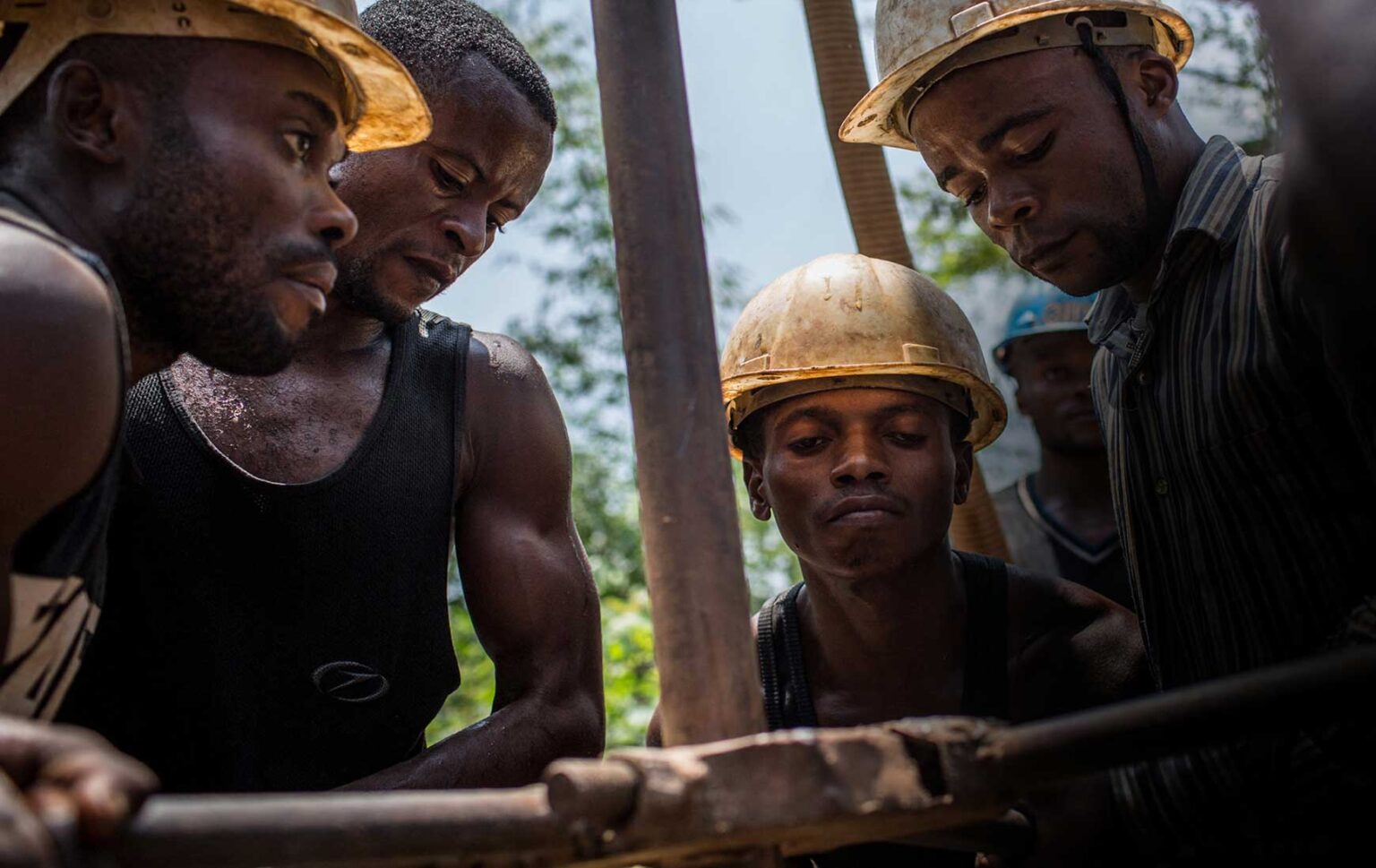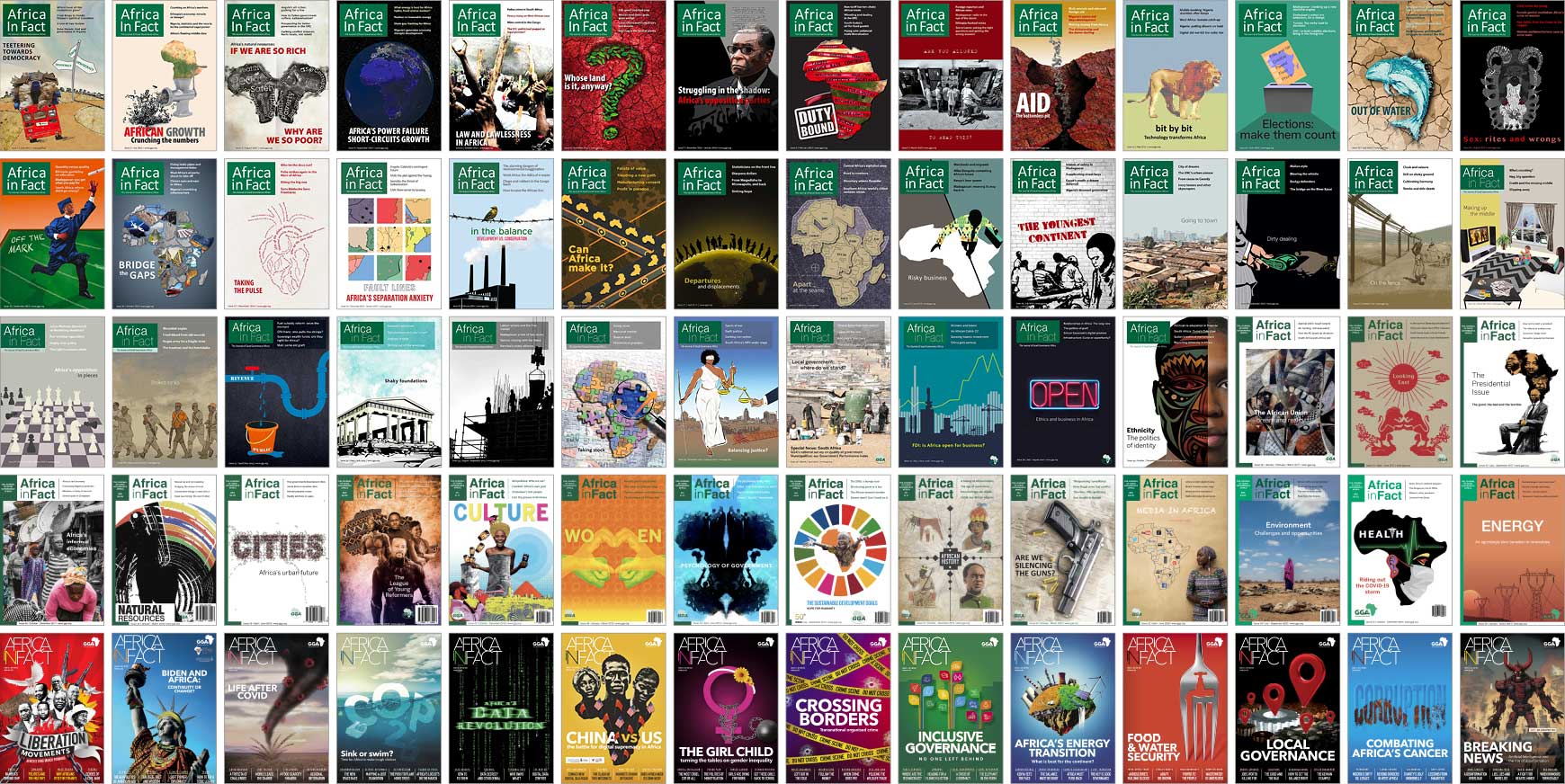Every day in Kinshasa, the capital of the Democratic Republic of Congo (DRC) and home to nearly 20 million people, hordes of women carrying basins, plastic containers and buckets leave their homes to fetch water elsewhere, which they carry on their heads or in wheelbarrows. The time varies from one area to another; some go in the morning, and others in the afternoon. Others leave a little after midnight despite the risk of being mugged and or even raped by criminals lurking in dark streets with no public lighting.
“Our taps ran dry a long time ago; it could be nearly two years now,” one resident, Theresia, told Africa in Fact. “So, we go to fetch water nine streets away from here. My neighbours and I go around midnight because at that tap, there’s only water between midnight and 2am and then it stops.” Another resident, Sophie, added: “If you don’t come out at night, you miss out and your family suffers all day.”
The Kinois – residents of Kinshasa – say they drink tap water despite its poor quality. “Some days, the water looks yellowish and has little black things in it, but we don’t care,” Mimi told Africa in Fact. “We wait until the black stuff goes down. We drink it because we don’t have a choice, but some people boil it before drinking it.” Her friend, Marthe, agreed: “Yes, no choice. This is how DRC works; you just take what you see and don’t ask questions or complain because nobody will hear you.”
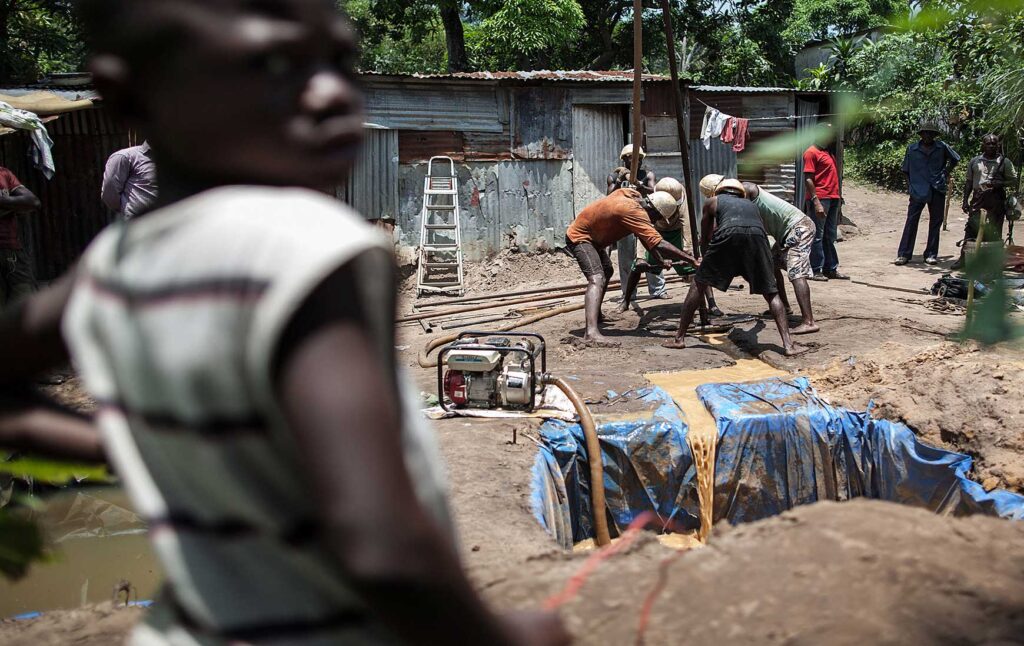
The World Bank says while access to water is progressing in many parts of the world, the situation in sub-Saharan Africa (SSA) is deteriorating, especially in the DRC, which has one of the world’s lowest rates of access to drinking water and adequate sanitation.
UNICEF says only 52% of the DRC population has access to an improved water source and 29% to improved sanitation facilities. REGIDESO, the state-run water supplier, stopped coping long ago due to increasing demand from both cities and rural areas amid uncontrolled and unmanaged urbanisation, which has strained the city’s basic infrastructure and led to rapid population growth.
With an annual urban growth rate of 5.1%, the “chaotic” DRC capital is Central Africa’s largest and fastest-growing city and will likely reach a population of 30 million people by 2030. The city already faces a critical lack of basic services such as healthcare, education, and electricity and is swimming in a sea of uncollected waste and plastic pollution.
“It is paradoxical that we should find ourselves in this kind of situation, not only given the abundance of freshwater resources but also the country’s wealth of natural resources. It’s really sad and shocking,” Jean-Pierre Matumona, a former employee of REGIDESO, told Africa in Fact.
According to the World Bank, despite possessing more than 50% of the African continent’s water reserves, drinking water remains a luxury for the Congolese population.
“Uncontrolled and unmanaged urbanisation has brought this city to its knees in all aspects,” Matumona said. “Everything was fine from the 1970s until the armed conflict began in the east in the late ‘90s, and people started flocking to the capital. REGIDESO started to feel the pinch.
“And as the war intensified both in the northeast and the east, and poverty worsened in rural areas amid the lack of adequate rural development policies, more people fled to Kinshasa. REGIDESO, which had not planned and invested enough to cope with the increasing demand, collapsed, bringing regular water supply to a standstill. And the situation has gone from bad to worse ever since.”
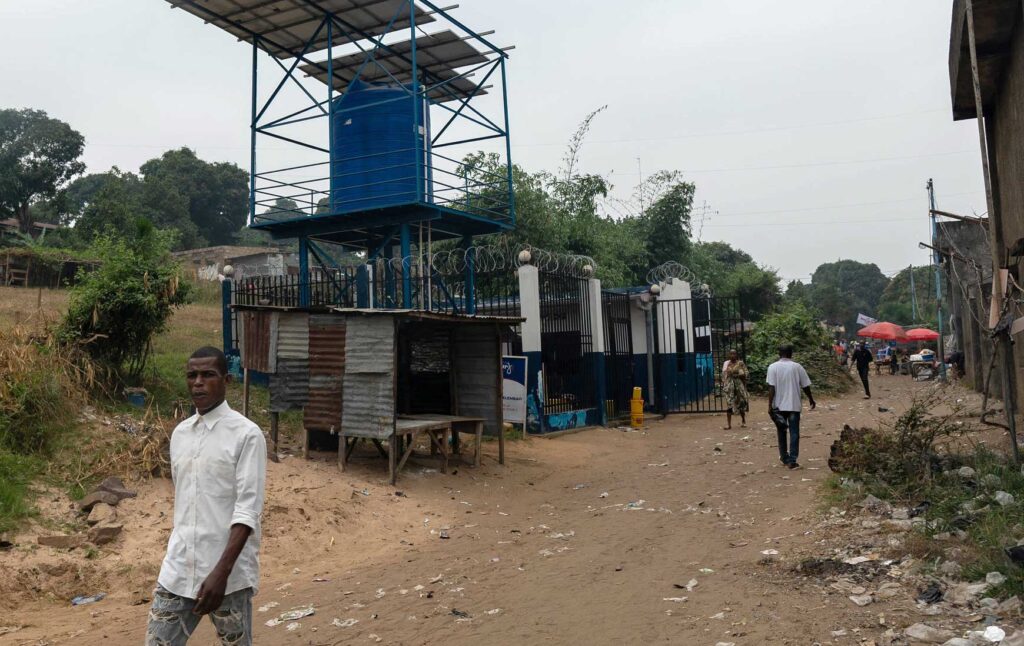
In short, Matumona said, REGIDESO’s woes were due to obsolete infrastructure, insufficient electricity supply, insolvent customers (mainly the state), and population growth.
“Back in 2014, the state owed the company more than $70 million, and I’m sure as we speak that amount has skyrocketed because I know how our government works. How do you invest in infrastructure, upgrade the existing one and build new ones when you are owed so much money?”
In the meantime, many people have resorted to drilling wells, which has become a lucrative business, with foreign companies flocking to offer their services and expertise.
“Kinshasa now looks like a big village of water wells,” Samuel Mavanga, a retired plumber, said. “They are building wells everywhere, which is a shame because this is usually a feature of rural areas. But what can we do? It’s better than nothing.”
While water supply has suffered, food prices have also kept rising, suffocating the majority of the Kinois, 60% of whom live in extreme poverty. Unemployment is believed to be hovering around 90%, as the informal sector dominates the capital’s economy.
“Most of the food consumed in Kinshasa is produced by small-scale farmers living in the [western] provinces of Kongo-Central, and some from the Grand Bandundu”, Paul Mambweni, a small-scale farmer himself, told Africa in Fact. “However, the deterioration of the rural road network seriously compromises the availability of supplies, making food prices rise on a regular basis.”
Mambweni, from Kongo-Central, said the government did little to assist small-scale farmers, who struggle on their own to produce most of the food consumed by the Kinois.
Last year, the government said it would launch a rehabilitation and construction project of 11,000 km of agricultural feeder roads across the country’s 26 provinces. But Mambweni doubts the project will even get off the ground. “I know my people; this is easier said than done. Given the rife corruption in government, I doubt even 100 km of roads will see the light because most of that money will be swindled.”

Augustin Lokamba, a former farmer who now works as a carpenter, told Africa in Fact that in previous years, urban farming helped the city cope with food shortages.
“But the city’s authorities sold all the green open spaces we used to farm on to well-off individuals and foreign companies,” he said. “If you want to know why this city is in this mess, look no further; it’s the authorities, both national and provincial. They have never planned ahead and never bothered to sit down and say, ‘It’s high time we start doing something to manage this rampant urbanisation.’
With water and food supplies dwindling at an alarming rate amid unmanaged urbanisation, lack of planning and poor urban management, the city finds itself at a crossroads.
According to the UN Department of Economic and Social Affairs, poorly planned urbanisation can lead to congestion, higher crime rates, pollution, increased levels of inequality, and social exclusion.
With a rate of particulate matter (PM) 2.5, 10 times higher than the air quality threshold recommended by the World Health Organization (WHO), Kinshasa has some of the most polluted air in the world. In addition, urban criminality is widespread, as dangerous youths – unskilled, uneducated, unemployed, and intoxicated – known here as Kuluna – wreak havoc.
A planning expert who works closely with the government told Africa in Fact that urbanisation in Kinshasa must be accompanied by huge investment in infrastructure and better planning to cope with the influx of people flocking to the cities to seek either safety or a better life.
“When residents complain about the water, it is, first of all, because the pipes have not been replaced for decades, so they are rusted,” he said.
“Secondly, we have not massively invested in the treatment of water for a long time. Water in the DRC is among the worst quality in the world. Most well-off households do not even drink tap water; only the poor drink it at their peril.
“Thirdly, nobody knows how many people live in this city. Some say 12 million, others talk about 15, but I believe it could 20 or even more because the country has not had a proper census since 1984. How do you plan for investment and service delivery if you don’t know exactly how many live in a city or town?”
Fourthly, corruption played its part, he said, claiming that most state-owned enterprises (SOEs) in DRC, including REGIDESO and SNEL (the national electricity supplier), to name just two, had suffered decades of bad management and nepotism.

“When you appoint ruling parties’ loyal cadres, close friends and family at the helm of SOEs, it is highly likely that the outcome will be disastrous. This is how it has been from the Mobutu era to Kabila’s and now Tshisekedi’s. Nothing has changed. You cannot fire them because they are your peers, and the country and the people suffer.
“For decades, the city has been run like a family convenience store, where everyone can sell an item and put money in his pocket,” he said.
Kinshasa is not an anomaly. The African Centre for Cities says that though corruption at the city level is not a new phenomenon, it is becoming increasingly prevalent, growing in step with the globally rising rates of urbanisation.
Richard Main, C40 Cities [a global network of some 100 mayors of cities worldwide] Head of Global Media Communications, told Africa in Fact that as cities continue to grow rapidly, ensuring food and water security was a critical challenge. “Cities must take bold action to transform food systems by promoting local and sustainable food production, reducing food waste, and improving access to nutritious, affordable food.”
London-based Main also said water security was equally urgent, particularly as climate change exacerbated droughts, floods, and water scarcity.
“Cities must invest in nature-based solutions and smart water management systems. By prioritising sustainable food and water strategies, cities protect vulnerable communities, build resilience to climate shocks, and ensure a healthier, more sustainable urban future.”
All of these required cities to adopt policies prioritising equity, resilience, and climate action. “They must implement inclusive governance, ensuring marginalised communities are central to climate policies,” Main said.

Kinshasa-born Issa Sikiti da Silva is an award-winning freelance journalist. Winner of the SADC Media 2010 Awards in the print category, he has travelled extensively across the African continent. He lived in South Africa for 18 years, where he worked for 10 years as a journalist before leaving for West Africa, and later to East Africa, to work as a foreign correspondent. He is currently based in Dakar, Senegal.

